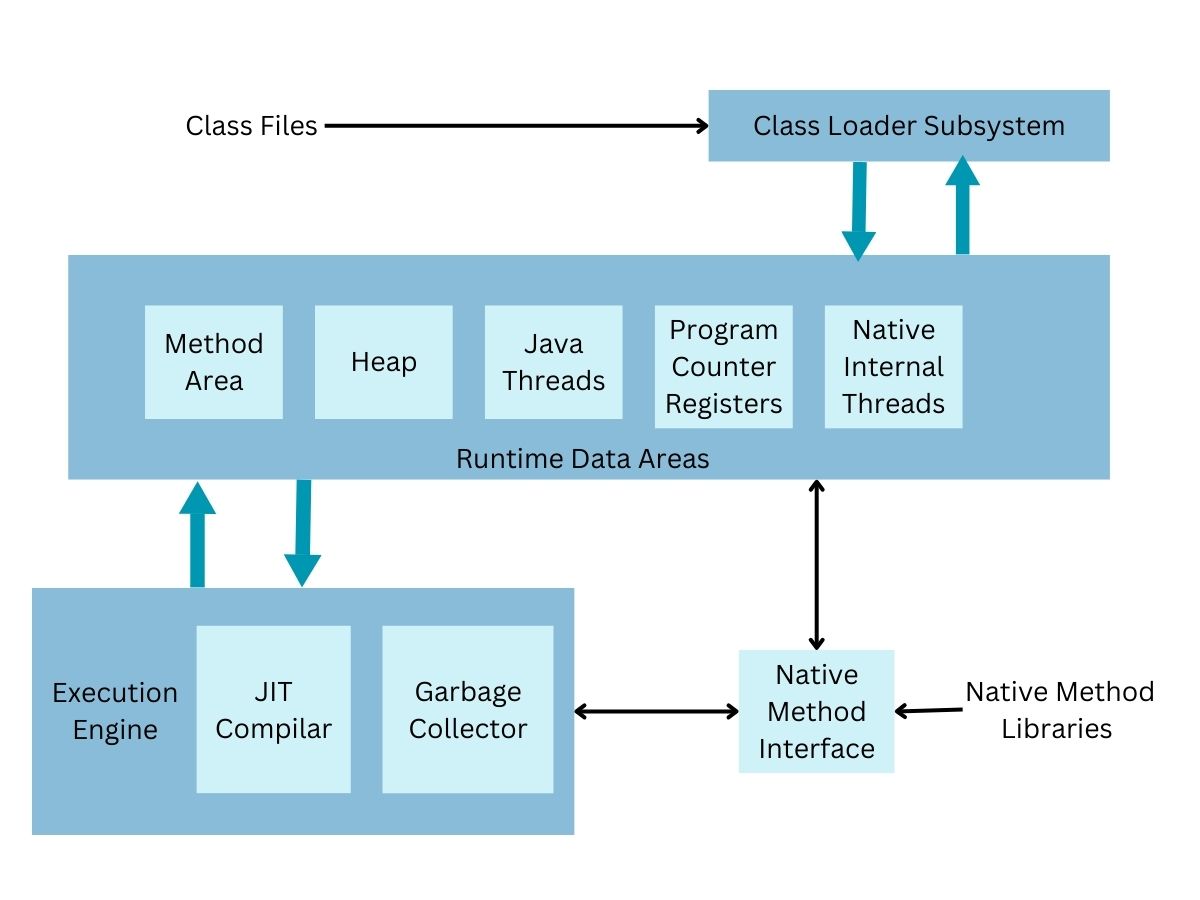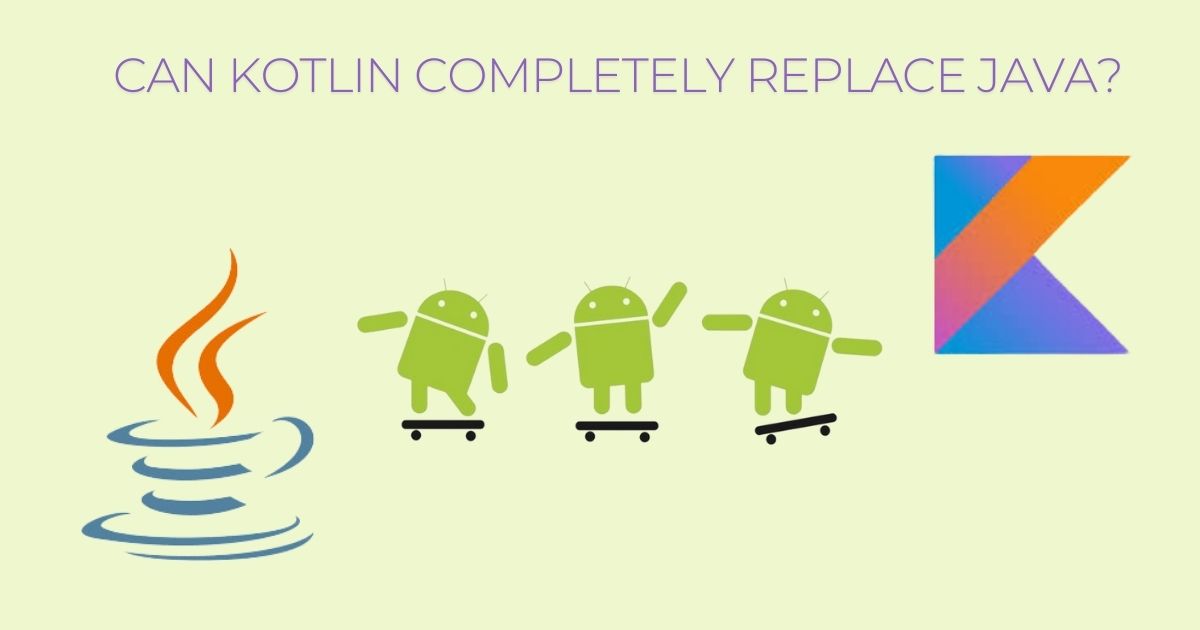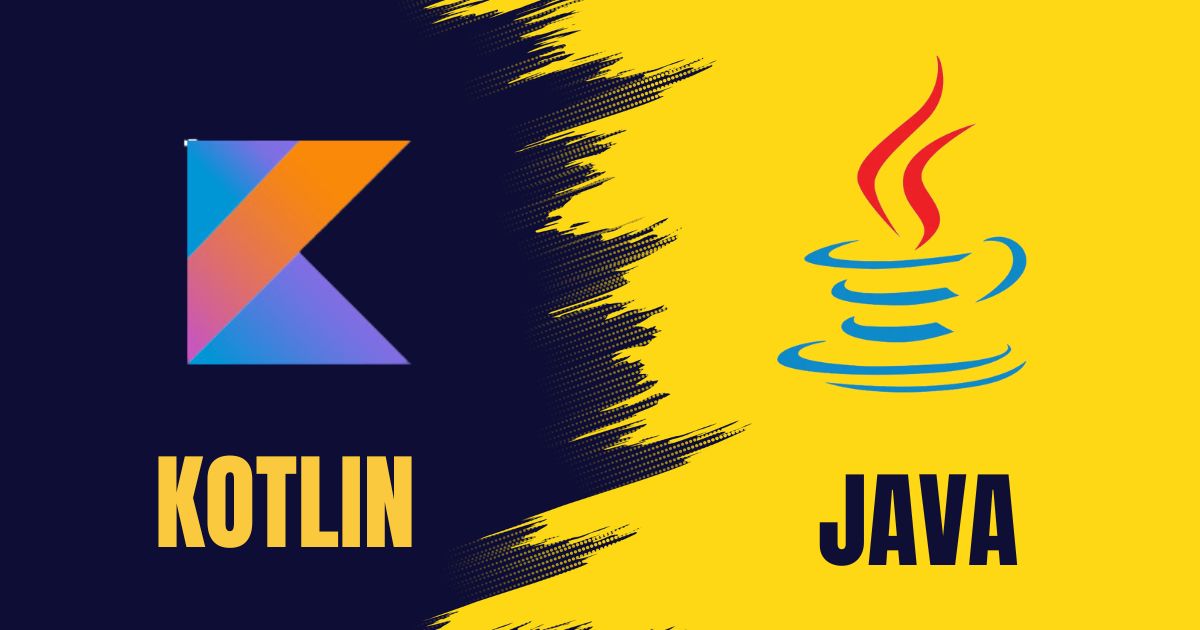Kotlin vs Java: Which is the Best for Your Next Project?
In recent years, mobile platforms have expanded rapidly with the rise of smartphones. When choosing a programming language for a new project, especially in the world of Android development, Kotlin vs Java are two of the top contenders. It can be said that Java has traditionally held the leading role in Android application development, especially as an open-source platform. However, with the introduction of Kotlin, Java's dominance in the Android mobile segment has gradually declined.
An Overview of Kotlin and Java
The Kotlin mobile application development community has continued to grow since 2017, Google acknowledged Kotlin by making it the second official language of Android application development. Since then, this programming language has witnessed a sharp increase in demand in both the developer and enterprise communities.
Kotlin is a programming language for the Java Virtual Machine (JVM) and JavaScript. Kotlin was created to increase productivity and improve the coding experience in a way that is both practical and efficient. Kotlin's main focus is to enable mixed-language projects.
Kotlin also introduces improved syntax, as well as concise expressions and abstractions.
Meanwhile, Java is a well-established programming language with extensive open-source tools and libraries to help developers.
That being said, no language is bug-free, and even Java can have its share of complex issues that can make a developer's job tedious. Meanwhile, if anything occurs, Kotlin introduces solutions to common programming headaches and improves the entire Java ecosystem.
Two years after its launch, Kotlin has become a more stable and suitable development option for Android Studio. Some developers seem to believe that Kotlin will supplant Java for Android development in the coming years. Despite the fact that some other experts see Kotlin and Java as coexisting with neither one being superior to the other.
But for the most part, Kotlin’s strengths outweigh the problems Java has. There are certain limitations in Java that hinder Android API design. Kotlin is inherently lightweight, clean, and less verbose, especially when it comes to writing callbacks, data classes, and getters/setters.
In other words, Kotlin is specifically designed to improve upon existing Java models by providing solutions to API design shortcomings.
What are the differences between Kotlin and Java?
Let's take a look at what's so remarkable about both Kotlin and Java.
Kotlin vs Java: Syntax structure
Kotlin has a more concise and modern syntax, which helps to reduce boilerplate code. (Boilerplate code is the code that can be reused in many places throughout the system.) Many operations can be performed with fewer lines of code. Kotlin uses a concise syntax and can type inference to reduce repetition.
Java requires explicit declaration of variables, more verbose syntax, more boilerplate code. It uses more try-catch blocks to handle null errors. (Try-catch block: An exception handling mechanism in Java. It helps you control and handle errors that occur in the program safely and effectively, preventing the program from suddenly stopping and affecting the user experience.)
Java's syntax is quite detailed and can sometimes lead to writing more code to perform simple functions. For example, declaring a class and a method requires many lines of code.
Kotlin vs Java: Data system
Kotlin also uses a static type system but has automatic type inference, making the code more concise. It supports null safety by separating nullable and non-nullable types, minimizing the risk of encountering NPE (NullPointerException).
You probably already know that NullPointerException (NPE) is a common exception error in programming, especially in languages that support null values, such as Java and Kotlin. It occurs when you try to access or use a null reference, resulting in the program being unable to continue execution and being abruptly terminated.
On the other side, Java uses a static type system and all variables must be declared with a specific type. It does not support null safety, which means that NullPointerException (NPE) can be encountered when working with null variables.
Kotlin vs Java: Memory Management System
Java uses Garbage Collection (GC) for automatic memory management. GC automatically frees memory when objects are no longer referenced. However, GC in Java can cause performance issues when garbage collection occurs, especially in applications that require low latency.
The image below describes Java Garbage Collection:

Let us explain in more detail:
Class Loader Subsystem
- Method Area: Stores the bytecode of loaded classes.
- Heap: Stores objects and their data.
- Java Threads: Manages the execution of Java code.
- Program Counter Registers: Tracks the current instruction being executed by each thread.
- Native Internal Thread: Maps Java threads to native operating system threads.
Execution Engine: Interprets and executes Java bytecode.
JIT Compiler: Compiles Java bytecode into native machine code to improve performance.
Garbage Collector: Manages the allocation and release of memory of objects.
Kotlin also uses the JVM's GC similar to Java, so memory management is basically the same when running on the JVM. Kotlin can use a different garbage collection when running on other platforms such as Kotlin/Native.
Kotlin vs Java: Object-Oriented Programming
Java fully supports object-oriented programming (OOP) with basic concepts such as classes, objects, inheritance, polymorphism, and encapsulation. It supports features such as abstract classes and interfaces. These are two important concepts in Java object-oriented programming that help you create flexible and reusable designs.
Kotlin also fully supports OOP and goes even further with features like classes, abstract classes, interfaces, and extension methods.
Kotlin enables features like data classes, sealed classes, and extension functions, which help write more efficient and concise OOP code.
Data Classes are a type of class in Kotlin designed to store data. These classes automatically provide useful functionality like equals(), hashCode(), toString(), copy(), and component methods without having to manually code them.
Sealed Classes are a type of class in Kotlin that limits the subclasses that can inherit from it. They are used to represent sealed type hierarchies, where all possible instances of a type are known in advance and tightly controlled.
Kotlin vs Java: Performance and Scalability
Java has good performance and high scalability that proven over decades with millions of large applications and systems. Java's JVM is highly optimized and has many supporting tools to improve performance.
Kotlin runs on the JVM, so the performance is similar to Java when running on the same platform. It also supports other platforms such as Android, JavaScript, and native code, which helps to expand the application capabilities of the language. Moreover, Kotlin has modern syntax and features that improve development efficiency as well as code maintenance.
| Criteria | Java | Kotlin |
| Syntax | Verbose, lots of boilerplate | Concise, less boilerplate |
| Data system | Powerful, statically typed | Powerful, statically typed, supports null-safety |
| Memory safety |
|
|
| Object-oriented programming | Full support, using Class and Object | Full support, using Class and Object, and adding support for functional programming |
| Performance and scalability | Stable performance, widely used in many large systems | Performance equivalent to Java, easy to extend, good integration with existing Java projects |
| Compatibility with other languages | Fully compatible with Java, allowing the use of existing Java code and easy integration with Java libraries. | Not directly compatible with Kotlin, requiring rewriting code or using conversion tools. |
| Community | The community is growing and active, providing a lot of documentation, tutorials and support for users. | A large and long-standing community, providing a lot of documentation, tutorials and support for users. |
| Number of libraries | The number of libraries is increasing, but still less than Java. | The number of libraries is huge, meeting almost all development needs. |
| Compatibility with Older Java Versions | Limited compatibility with older Java versions, which may affect integration with existing systems. | Good compatibility with older Java versions, easy integration with existing systems. |
In short, both Kotlin and Java have their own advantages. Kotlin brings improvements in syntax and features, while Java remains powerful and popular with a large programming community. The choice between Kotlin and Java depends on the specific requirements of the project and the preferences of the development team.
Suitable Use Cases of Kotlin vs Java
Kotlin and Java use cases reveal distinct strengths for each language in various development scenarios.
Use Cases of Kotlin
Kotlin has gained popularity for its modern features, concise syntax, and interoperability with Java, making it suitable for a variety of development scenarios.
Android App Development: Kotlin is the official programming language for Android app development, supported and recommended by Google. Kotlin has a concise syntax, is memory-safe, and is compatible with Java, making it easier for Android developers to write code more efficiently and securely.
Backend web development: Kotlin can be used to develop the backend web with frameworks like Spring Boot, Ktor, Micronaut. Kotlin provides object-oriented programming, functional programming, and good support for synchronous and asynchronous processing, helping to build a powerful and flexible backend web.
Cross-platform application development: Kotlin can be used to develop cross-platform applications with frameworks like Kotlin Multi-Platform Mobile (KMM). KMM helps to share code between mobile (Android, iOS) and desktop (Windows, macOS, Linux) platforms, saving development time and costs.
Writing automation scripts: Kotlin can be used to write automation scripts with libraries like Gradle Kotlin DSL, Apache Beam. Kotlin provides concise syntax that makes writing scripts easy, efficient, and easy to maintain.
Use Cases of Java
Java has a broad range of use cases due to its stability, performance, and extensive ecosystem.
Enterprise application development: Java is a popular programming language in enterprise application development due to its stability, security, and high scalability. Java has a large community, many libraries and frameworks supporting complex enterprise applications.
Frontend web development: Java can be used for frontend web development with frameworks like GWT, Vaadin. However, JavaScript is a more popular choice for frontend web due to its flexibility and high performance.
Embedded software development: Java is widely used in embedded software development due to its stability, security, and good memory management. Java has many frameworks and libraries supporting embedded devices, such as Android Things, Java ME.
Projects requiring high compatibility: Java is highly compatible with existing systems and libraries, so it is suitable for projects requiring high stability and integration.
Should you learn Java or Kotlin?

Since the beginning of 2018, about 1.5 million developers have written in Kotlin code, and in the first half of 2019, that number has almost doubled, with giant brands starting to use Kotlin - supported by JetBrains and Google. A report suggests that Kotlin will dominate the Android platform in the near future.
So... the real question is:
"CAN KOTLIN COMPLETELY REPLACE JAVA?"
Indeed, Kotlin is quickly proving itself to be a superior programming language for mobile application development and offers developers a lot of opportunities to experiment with modern application programming. Overall, Kotlin is setting a new standard for what a programming language should be able to do.
However, Java is still the real giant. Because Java has features that Kotlin does not have. Java still holds its value even though it is currently losing its dominant position in the Android market share.
With the addition of Kotlin, the Android market is more competitive than before. As programmers, we are also users. The more competitive the languages are, the more advantageous we are.
But if you want to start learning programming, Java is still a good choice instead of Kotlin - a language that is only good if you have experience with Java and are only oriented towards Android.
Java is multi-platform, good for the Web, and good for Apps.
Conclusion
Kotlin vs Java are both powerful programming languages, each with its own advantages. Java, with its stability and wide support, is suitable for enterprise applications and large systems. Kotlin, with its modern syntax and strong support from Google, is ideal for Android application development or new projects.
Beginners should choose Java if they want a solid foundation in programming and a wide range of job opportunities. Learning Kotlin first is suitable if you are interested in Android app development or want to write fast, error-free code. Understanding both languages will give you a big advantage, making you more flexible and creative in software development.
Do you need a reputable source to learn about technology? You can choose Skilltrans's course. A variety of updated courses will lead you to success.

Meet Hoang Duyen, an experienced SEO Specialist with a proven track record in driving organic growth and boosting online visibility. She has honed her skills in keyword research, on-page optimization, and technical SEO. Her expertise lies in crafting data-driven strategies that not only improve search engine rankings but also deliver tangible results for businesses.




